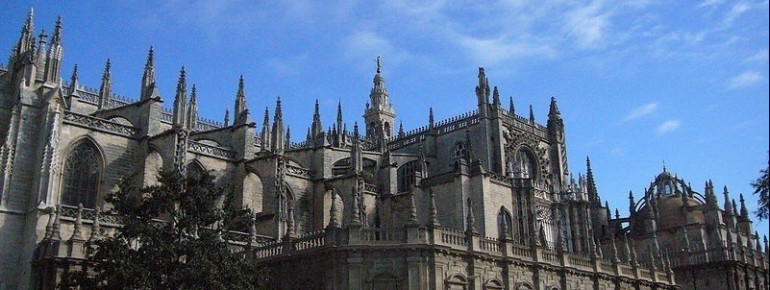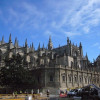Contents
Description
Seville Cathedral is an episcopal church of the Seville diocese. Measuring 115m (126yd) of length and 76m (83yd) of width it is the largest Gothic church in the world and third only to the St. Peter's Basilica in Rome and St. Paul's Cathedral in London.
Historical Information
Starting in 1410, the complex of the cathedral was built within 500 years of construction time. Although the actual church was completed in 1519, the construction works of the extensions were only finished in 1929.
In the blooming Seville as a mercantile place, the decision was taken to build a cathedral here that would live up to the city's status and reputation. The cathedral was then built on the ruins of the main mosque that was heavily damaged after an earthquake. In the years to follow, a basilica five naves with 30 chapels, 9 church porches, an impressive high altar, annexes and orange courtyard.
The cathedral is famous for its Renaissance glass windows, the king's chapel, the chapel of the “Virgen de la Antigua”, the “virgin of antiquity”, and the tomb of Christoph Columbus whose remains were transferred back to Seville in 1902. In 1987 the separate bell tower of the cathedral, the former minaret of the mosque, was officially listed as a UNESCO world cultural heritage sight (see article about “La Giralda”).
Interesting facts
- Seville Cathedral - Santa María de la Sede is among the 10 best rated Tourist Attractions in Spain.
- The day pass at Seville Cathedral - Santa María de la Sede is €13 making it one of the 3 cheapest tourist Attractions in Andalusia.
How to get there
The cathedral lies in the historical centre of the city. Not far from the bullfighting arena and the Plaza Nueva. Just opposite the cathedral one finds the Indian archive.
By public transport
The inner core of the old town can be reached. All lines stop nearby the cathedral.



